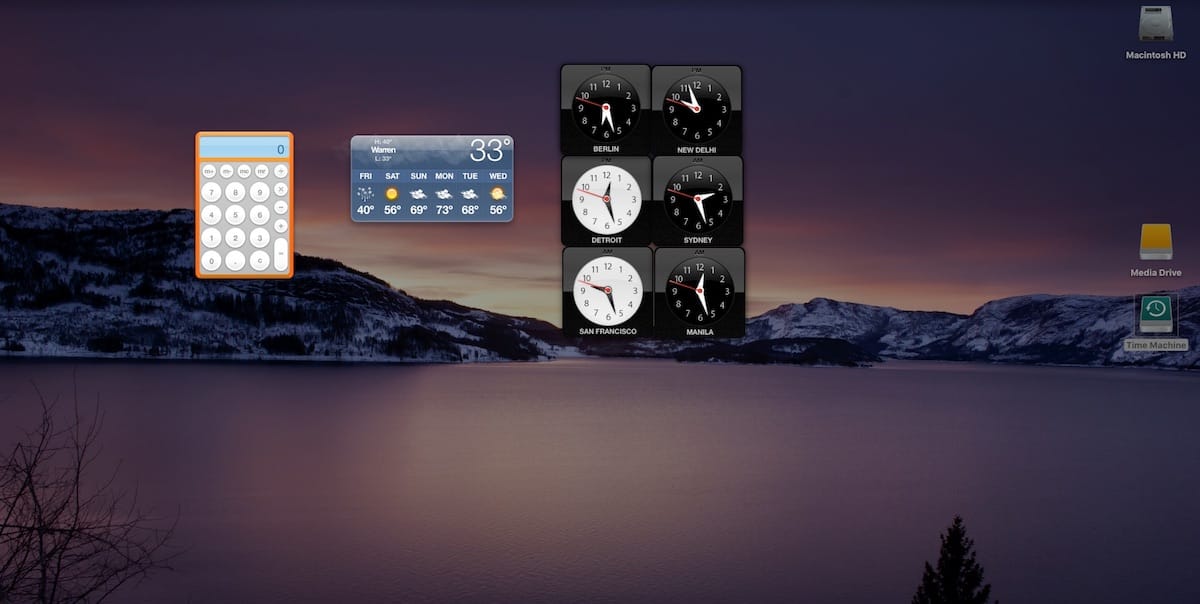
- #Jamf disable dashboard mac os how to#
- #Jamf disable dashboard mac os install#
- #Jamf disable dashboard mac os update#
- #Jamf disable dashboard mac os upgrade#
The Automox agent will now start installing on your scoped Mac devices.
Click Packages on the left and add the repackaged Automox agent installer package to the policy. Click Choose File and upload the repackaged Automox agent installer. Click the + New button in the upper-right corner to add a new package. Log in to your Jamf Pro server and go to Computers > Management Settings > Packages. From the menu bar, click Build and from the drop-down menu click Build again.Īfter testing the repackaged installer, follow these steps:. Under Additional Resources click the + button and add the Automox agent installer. In the Scripts tab, choose the updated post-install script under the Post-installation option. Select " Require admin password for installation". In the Settings tab, enter an identifier name and version for your installer package. Enter a name and directory for your project, then click Create. On your computer, launch Packages and choose Raw Package as the template. Repackage Automox installer using Packages: #Jamf disable dashboard mac os install#
Download and install packages from ĭownload the Automox post-install script for packaging. In this example we use WhiteBox packages. The installer can be repackaged using Jamf Composer, Packages, or other similar tools. The Automox agent installer can be repackaged with a post-install script for use in Jamf Pro, Intune, other MDMs, or manually through a number of methods. Repackage the installer for use with Jamf Pro or other MDMs Last time we use this policy but user are able to download the latest Os Seirra.
#Jamf disable dashboard mac os upgrade#
What is the correct policy so our user will not able to download or upgrade there OS. Otherwise, add a Scope and any desired Self Service or User Interaction settings and save your policy. We want our user not able to upgrade there OS.
#Jamf disable dashboard mac os update#
If you’ve created Smart Groups or extension attributes to detect the installation of the agent, then adding the Update Inventory option from the Maintenance section might be helpful. Set the priority of the script to After. Click Scripts on the left and add the post-install script. Click Packages on the left and add the Automox agent installer package to the policy.  Set the site, category, trigger, execution frequency, and other required fields. To add a new policy, go to Computer > Policies and click + New. Fill in any other field used by your organization and click Save.Īfter the package is uploaded and available, do the following:. Click Choose File and upload the Automox agent installer that you downloaded from the Automox console. Enter a display name for the package and choose a category from the drop-down menu. To add a new package, click + New in the upper-right corner. Navigate to Computers > Management Settings and click Packages. To add the Automox agent installer package, continue with these steps: Click Save in the lower-right corner to save your script. In the Options tab, set the priority to After. In the Script tab, paste the contents of the post-install script that includes your user key. Include whatever information or notes necessary for your organization. In the General tab, enter your script name and select a category.
Set the site, category, trigger, execution frequency, and other required fields. To add a new policy, go to Computer > Policies and click + New. Fill in any other field used by your organization and click Save.Īfter the package is uploaded and available, do the following:. Click Choose File and upload the Automox agent installer that you downloaded from the Automox console. Enter a display name for the package and choose a category from the drop-down menu. To add a new package, click + New in the upper-right corner. Navigate to Computers > Management Settings and click Packages. To add the Automox agent installer package, continue with these steps: Click Save in the lower-right corner to save your script. In the Options tab, set the priority to After. In the Script tab, paste the contents of the post-install script that includes your user key. Include whatever information or notes necessary for your organization. In the General tab, enter your script name and select a category. 
Click the + New button in the upper-right corner to create a new script.Log in to your Jamf Pro server and go to Computers > Management Settings > Scripts.This script is used in the following procedure: Add the access key you copied in the preceding operation to the accessKey variable in the script.Copy the user key from the Add Devices dialog window.ĭownload the Automox post-install script.From the Automox console, select the Devices tab.Install with Automox agent installation package and post-install scriptĭownload the Automox agent installation package:
#Jamf disable dashboard mac os how to#
The only built-in macOS mechanism removed by Jamf Connect is loginwindow:login, which displays the standard macOS login window.This article describes how to deploy the Automox agent with Jamf Pro. Mechanisms defined as privileged prompt the loginwindow to run the mechanism as the root user. The Mechanisms key lists the loginwindow settings as an array of strings. XML in PLIST format similar to the following should display: mechanisms

To list the currently installed loginwindow mechanism on a computer, execute the following command: security authorizationdb read







 0 kommentar(er)
0 kommentar(er)
